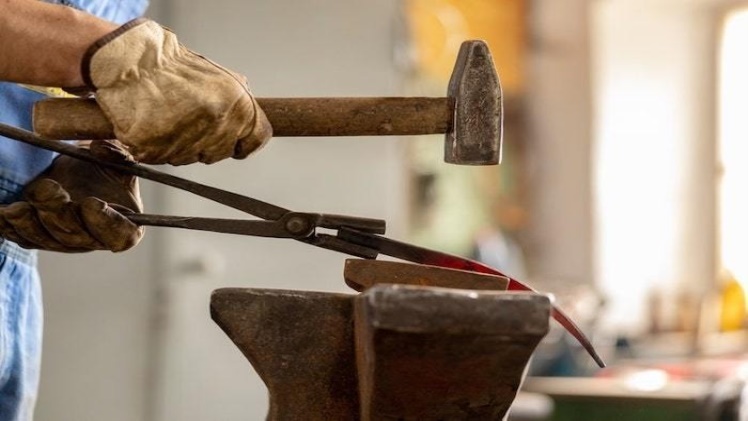Introduction
In the world of hand tools, the hammer is undoubtedly one of the most iconic and versatile instruments. Among the various types of hammers, the cross peen hammer stands out as a unique and multi-purpose tool. With its rich history and a wide range of applications, the cross peen hammer has found its place in various trades and continues to be a valuable asset for craftsmen and artisans. In this article, we’ll explore the cross peen hammer, its design, uses, and historical significance.
Anatomy of a Cross Peen Hammer
The cross peen hammer is characterized by its distinctive head, which features a flat face on one end and a wedge-shaped, cross-shaped peen on the other. The peen is set at a right angle to the handle, which allows for a variety of striking surfaces and angles.
Key Features:
- Flat Face: The flat face of the cross peen hammer is ideal for striking and shaping metal, flattening surfaces, and driving nails or pins. It provides a broad, even impact area for effective force distribution.
- Cross Peen: The cross-shaped peen, which gives the hammer its name, is designed for bending and shaping metals. It creates a localized point of impact, making it perfect for detailed work, like forming curves and angles in metalwork.
- Handle: The handle is typically made of wood, fiberglass, or metal, providing a comfortable grip and allowing for precise control during striking.
Historical Significance
The cross peen hammer has a rich history dating back to ancient times. It played a vital role in early blacksmithing and metalworking, enabling artisans to create intricate metal designs and objects. Over the centuries, its design has evolved to meet the demands of various trades, including carpentry, masonry, and jewelry-making.
Uses of a Cross Peen Hammer
- Blacksmithing: The cross peen hammer is a fundamental tool in the blacksmith’s arsenal. Blacksmiths use it to shape and form metal, create decorative patterns, and draw out length from a heated piece of metal.
- Metalworking: In metalworking and metal fabrication, the cross peen hammer is used to manipulate and shape metal sheets and bars, allowing artisans to create precise bends, curves, and angles.
- Carpentry: Carpenters employ cross peen hammers for tasks like setting nails, chiseling wood, and shaping or carving details in woodwork.
- Jewelry-Making: Jewelry artisans use cross peen hammers to texture and shape precious metals for creating intricate jewelry designs.
- Masonry: Masons and stone workers utilize the cross peen hammer for trimming and shaping stones to fit precisely in a structure.
- Automotive and Sheet Metal Work: The hammer is also essential in the automotive industry and sheet metal work for dent removal, panel shaping, and forming of various metal components.
Conclusion
The cross peen hammer is a timeless tool that has found its place in numerous trades throughout history. Its versatility, with a flat face for general striking and a cross peen for more precise work, makes it a go-to instrument for shaping and forming materials in various industries. Whether in the hands of a blacksmith, a carpenter, a jeweler, or a metalworker, the cross peen hammer continues to play a vital role in the creation of functional and artistic pieces. Its rich history and enduring usefulness cement its status as a cherished tool among craftsmen and artisans.

